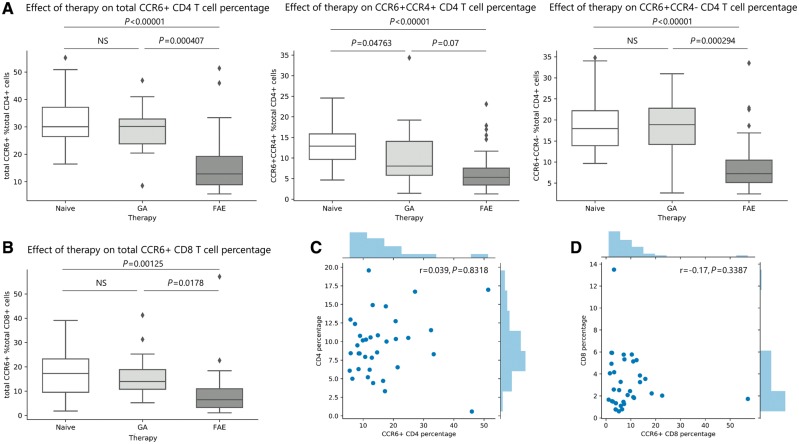Figure 2.
CCR6+ CD4 and CD8 T cell reduction is a novel immunomodulatory effect of FAE therapy. Whole blood from 47 treatment-naïve, 35 FAE and 16 GA treated multiple sclerosis (MS) patients was analysed by FACS. (A) FAE treatment was associated with significantly reduced percentage of total CCR6+ CD4 T cells compared to both treatment naïve and GA-treated patients, whereas GA had no effect. FAE therapy also reduced both CCR6+CCR4+ (Th17) and CCR6+CCR4− (Th1Th17) CD4 T cells. GA was only associated with reduced percentage of CCR6+CCR4+ (Th17) CD4 T cells, but with a trend towards a smaller magnitude compared to FAEs. (B) FAE therapy was also associated with significantly reduced CCR6+ CD8 T cells compared to both treatment naïve and GA-treated patients, whereas GA had no effect. (C) The total CD4 T cell percentage and CCR6+ CD4 percentage as well as (D) the total CD8 T cell percentage and CCR6+ CD8 percentage of each FAE-treated patient (n = 35) was plotted together with their corresponding histogram of distribution. The percentage of these cell types did not significantly correlate with each other. NS = not significant (P > 0.05). The lines in the box plot represent the quartiles of the dataset and the whiskers show the rest of the distribution, except for ‘outliers’ that were determined by a function of the interquartile range based on the package seaborn in python.

